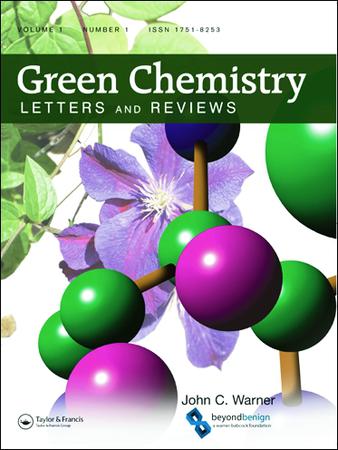阿托伐他汀、依折替贝和非诺贝特的RP-HPLC方法开发和验证,并进行了强制降解研究和绿色分析
IF 5.8
3区 化学
Q1 CHEMISTRY, MULTIDISCIPLINARY
引用次数: 3
摘要
本文章由计算机程序翻译,如有差异,请以英文原文为准。
Method development and validation of Atorvastatin, Ezetimibe and Fenofibrate using RP-HPLC along with their forced degradation studies and greenness profiling
ABSTRACT The present study aimed to separate the three-drug combination and degradant products by applying stress studies in bulk and pharmaceutical using RP-HPLC green analytical chemistry principles to make the separation better and more effective without compromising the standard limits. The three drugs have separated using the Mobile Phase Mixture of 10 volumes of buffer (0.1% triethanolamine in water) and 90 volumes of ethanol on the stationary phase Inertsil ODS 3 (250 mm x 4.6 mm), 5 µm column, at a wavelength of 256 nm. The method has been performed on a linear concentration range of 12–28 µg/mL for ATR, EZB, and 192- 448 µg/mL for FNF. The forced degradation studies showed that the ATR had > 5% degradation in acid, peroxide and thermal degradation, as EZB tends to degrade more than 15% at alkali hydrolysis. Moreover, the methodology has been validated according to ICH Q2 R1 guidelines, assessed using green evaluation tools like GAPI, AES, and AGREE, and found eco-friendly according to the output of the greenness outcomes. The developed method employed for determining three drugs has shown within limits according to the guidelines, easily adaptable by the pharmaceutical industries for their regular quality control analysis of the combinations. GRAPHICAL ABSTRACT
求助全文
通过发布文献求助,成功后即可免费获取论文全文。
去求助
来源期刊

Green Chemistry Letters and Reviews
CHEMISTRY, MULTIDISCIPLINARY-GREEN & SUSTAINABLE SCIENCE & TECHNOLOGY
CiteScore
9.10
自引率
3.00%
发文量
48
期刊介绍:
Green Chemistry Letters and Reviews is an Open Access, peer-reviewed journal focused on rapid publication of innovative new syntheses and procedures that reduce or eliminate the use and generation of hazardous materials. Reviews of state-of-the-art green chemistry technologies are also included within the journal''s scope.
Green Chemistry Letters and Reviews is divided into three overlapping topic areas: research, education, and industrial implementation. The journal publishes both letters, which concisely communicate the most time-sensitive results, and reviews, which aid researchers in understanding the state of science on important green chemistry topics. Submissions are encouraged which apply the 12 principles of green chemistry to:
-Green Chemistry Education-
Synthetic Reaction Pathways-
Research and Process Analytical Techniques-
Separation and Purification Technologies-
Renewable Feedstocks-
Degradable Products
 求助内容:
求助内容: 应助结果提醒方式:
应助结果提醒方式:


